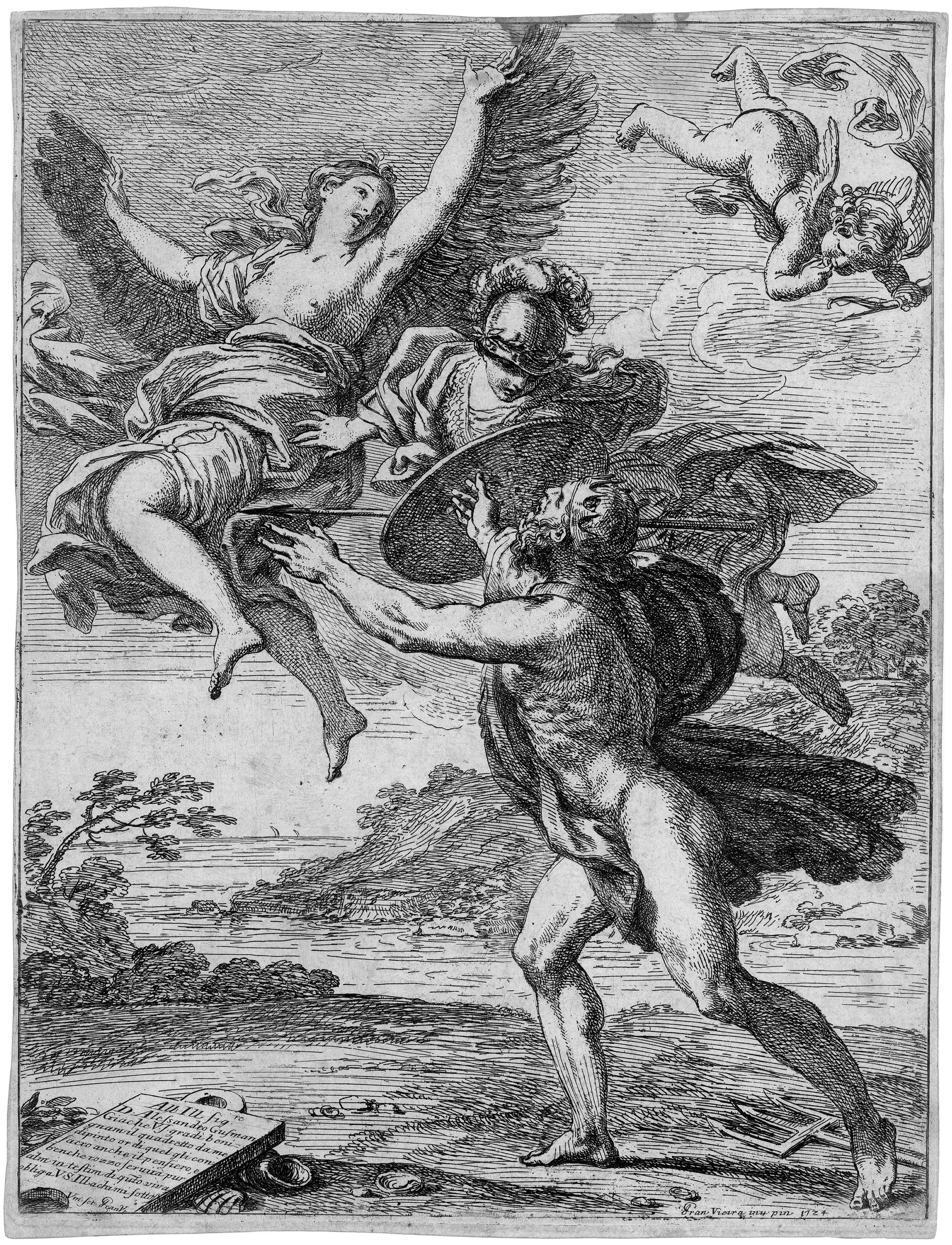Loading the page ...
Francisco Vieira de Matos
(1699–1783, Lisbon)
Neptune, Minerva and Coronis. Etching. 29 x 21.8 cm. Nagler 4.
The painter and etcher, Francisco Vieira de Matos, also known as Vieira Lusitano, was held in great esteem in Portugal in his lifetime, being appointed court painter in Lisbon in 1733. His biography was very colourful, being marked by great variety and including times of material need. Vieira spent the years from 1712 to 1719 in Rome, where he was trained by Benedetto Luti and Francesco Trevisani and devoted himself to studies of antiquity and the works of prominent predecessors such as Raphael and Carracci. A reckless love affair with the aristocratic Donna Inez Elena de Lima y Mello, who was forced by her parents to live in a convent against her will, led to numerous complications und ultimately to her abduction, Vieira himself liberating his future wife from the custody in which she had been held. Deprived of Donna Inez’ wealth as a result, the married couple initially lived in straitened circumstances. However, Viera’s situation improved in the early 1730s, his undisputed talent securing him important commissions. Regrettably, many of his works were destroyed during the Lisbon earthquake in 1755.
Vieira’s stylistic idiom was greatly influenced by late Roman Baroque. From 1721 to 1728 the artist again lived and worked in Rome and was admitted to the city’s Accademia di S. Luca in 1727. Although active mainly as a painter, Vieiro produced a modest corpus of etchings. Nagler records a total of seven, regarded even then as rare. The present etching, which Nagler describes as Vieira’s principal work in this field, portrays a lesser known episode from the second book of Ovid’s Metamorphoses. The beautiful Coronis, daughter of the Lycian king Coroneus, is pursued during a walk along the seashore by an impassioned Neptune. Minerva hastens to help the young girl, turning her into a bird so that she can escape the clutches of the lecherous god.
Vieira made the etching in 1724 during his second stay in Rome, basing his work on an original by his teacher, Benedetto Luti. The etching has been executed in a light, spirited style which is fully in keeping with Luti’s late Baroque stylistic language. The subtly differentiated etching technique, which makes use of a rich repertoire of very diverse hatching patterns, is reminiscent of the Bolognese masters of the Seicento such as Guido Reni and Simone Cantarini. A very fine, nuanced impression with thread margins, partly trimmed to the platemark on the left and right. Minor ageing, otherwise in excellent condition.
